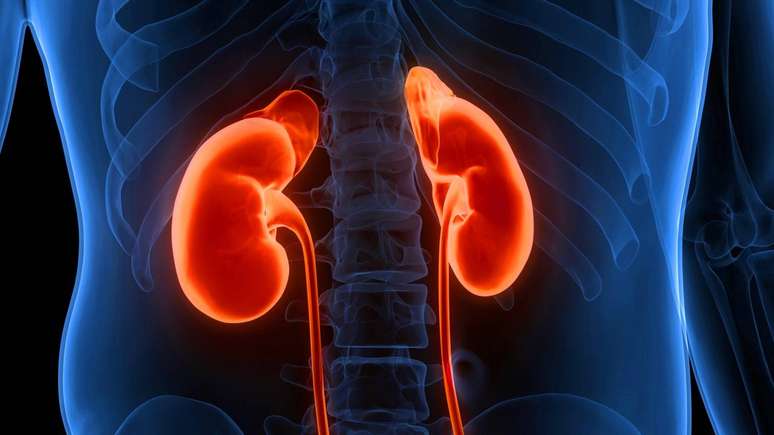The study shows that cigarettes cause changes in the mouth that can become cancer. Understand the warning signs
A study published in March in the scientific journal Cancer Research showed that smoking leads to changes in the mouth that can lead to cancer. The researchers found that cells in the mouths of smokers showed changes consistent with those of precancerous stages, with rapid and abnormal growth of cells most exposed to smoke, both e-cigarettes and traditional ones.
It is also good to remember that, in addition to cancer, smoking can also cause periodontal diseases, bad breath and stains on the teeth, tongue and mucous membranes. Therefore, habit is a great enemy of oral health. Electronic cigarettes (vapes) contain aerosols that cause dry mouth, among other problems.
“The lack of saliva can cause bad breath. And it makes no sense to brush your teeth to cure the problem, you absolutely need to stop smoking. It is worth remembering that e-cigarettes can also promote the appearance of blemishes, as well as other problems more serious for body health”, he explains. Patrícia Almeida, dental surgeon and member of the Association of Dental Surgeons of São Paulo (APCD).
What are the main changes that smoking causes to the mouth and teeth?
According to the expert, the habit of smoking can cause stains on the teeth and bad breath, gingivitis, which can progress to periodontitis and tooth loss. Additionally, mouth cancer is also a risk.
This is because, according to Patricia, smoking reduces the healing ability of the mouth and gums. It therefore impairs blood circulation and increases inflammation.
“When blood circulation decreases, whatever you have in your gums, healing and inflammation are slowed down. As a result, periodontal diseases can appear, such as gingivitis, which is the famous inflammation of the gum tissue, and periodontitis, which is the evolution of gingivitis. Gingivitis only affects the gum tissue, periodontal disease already affects the bone part”, he explains.
In addition, smokers often have dark spots on their teeth, and due to nicotine, they are difficult to remove. “With scraping, cleaning, prophylaxis, they come out, but they end up staining the enamel, so after that it is necessary to whiten the teeth”, underlines the dentist.
Bad breath may also appear. This is because cigarettes cause gingivitis, which causes bad breath. Furthermore, those who smoke have a decrease in saliva, that is, when the mouth is dry the breathing becomes different, highlights Patrícia.
The risk of mouth cancer
Smoking is a major risk factor for mouth cancer due to the chemicals in cigarettes, which are toxic and cause damage to cells. “These toxic substances present in cigarettes interrupt the proper development of cells, causing these tumors. So, you can get cancer of the mouth, tongue, gums, palate (roof of the mouth), cheek, floor of the mouth and lip , which is more associated with the cigarette filter”, warns the specialist.
Prevention: is it possible to reduce the impacts of smoking on oral health?
Unfortunately, there are no preventative measures that smokers can take to minimize this damage to oral health, Patrícia points out. This is because, no matter how much the smoker brushes his teeth after smoking, the effect is ephemeral. “It’s not something that stays in your mouth, it’s when you inhale the cigarette. So, you’re inhaling, there’s some toxin, some toxic substances in your mouth,” she warns.
Therefore the professional recommends going to the dental office every three months for an evaluation. In fact, this evaluation can also be done at home. “Do you have any different spots, any bruises that haven’t healed? It’s a good idea to check your tongue, cheeks, gums, have dental maintenance every three months and do some prophylaxis,” says the dentist.
In this sense, Patricia draws attention to the main warning signs: the first is bad breath, which is easier to identify. Secondly, stains on the teeth. Thirdly, the receding of the gum, that is, the patient begins to notice that the tooth is becoming larger. So it is already possible to see a gingivitis problem, a case of installed periodontal disease.
For those who want to quit smoking, Patricia recommends increasing the frequency of tooth brushing. “When you brush your teeth, you close your taste buds, so you don’t feel like you’re craving something (in this case, a cigarette) or craving a treat,” concludes the professional.
Source: Terra
Ben Stock is a lifestyle journalist and author at Gossipify. He writes about topics such as health, wellness, travel, food and home decor. He provides practical advice and inspiration to improve well-being, keeps readers up to date with latest lifestyle news and trends, known for his engaging writing style, in-depth analysis and unique perspectives.









